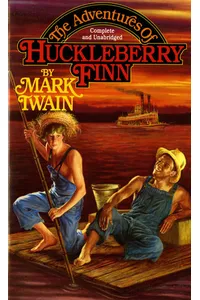Step into the sun-drenched world of Tom Sawyer and Huck Finn, where the Mississippi River sparkles with adventure and mischief! Mark Twain’s iconic duo, born from the heart of 19th-century America, invites readers to join their escapades filled with friendship, freedom, and a touch of rebellion. This beloved series blends nostalgic boyhood tales with sharp social commentary, making it a timeless gem in American literature.
Through the eyes of Tom, a clever trickster, and Huck, a free-spirited outcast, Twain crafts stories that capture the thrill of youth and the complexities of morality. Whether you’re new to their world or revisiting old friends, the Tom Sawyer and Huck Finn series promises a wild ride along the riverbanks!
How Tom Sawyer and Huck Finn Began
Mark Twain, the pen name of Samuel Clemens, drew inspiration from his Missouri childhood to create Tom Sawyer and Huck Finn. Growing up in Hannibal, a bustling Mississippi River town, Twain soaked in the sights and sounds of steamboats, small-town antics, and diverse characters. In the 1870s, he channeled these memories into The Adventures of Tom Sawyer, published in 1876, which introduced readers to the mischievous Tom. The overwhelming success of the novel spurred Twain to craft more stories, with Adventures of Huckleberry Finn (1884) becoming his masterpiece, celebrated for its bold exploration of race and morality.
The Heart of Tom Sawyer and Huck Finn
The series centers on two key novels, with additional stories expanding the duo’s world. The Adventures of Tom Sawyer follows Tom’s playful schemes, from whitewashing fences to treasure hunts, set against the idyllic backdrop of St. Petersburg, a fictionalized Hannibal. Adventures of Huckleberry Finn, often hailed as a cornerstone of American literature, tracks Huck and Jim, an enslaved man, as they raft down the Mississippi, grappling with freedom and conscience. Later works like Tom Sawyer Abroad (1894) and Tom Sawyer, Detective (1896) offer lighter, whimsical tales, sending the boys on quirky adventures like hot-air balloon trips.
The series’ themes resonate deeply: friendship, as Tom and Huck’s bond weathers trials; freedom, as Huck rejects societal constraints; and morality, as characters confront prejudice and injustice. Twain’s conversational style, laced with humor and regional dialects, paints a vivid picture of 1840s America. The Mississippi River serves as both a setting and a symbol, flowing through stories that balance nostalgia with critique.
Why Tom Sawyer and Huck Finn Resonates
The Tom Sawyer and Huck Finn series endures as a cultural touchstone, shaping American literature and inspiring countless adaptations, from films to plays. Huckleberry Finn’s fearless examination of racism and morality sparked debates, cementing its place in academic study, while Tom’s antics charm readers of all ages. The series’ blend of adventure and insight invites fans to reflect on society while savoring the thrill of youth. Its universal themes keep it relevant, captivating new generations worldwide.
- First Published: 1876 (The Adventures of Tom Sawyer)
- Main Books: 4, including Adventures of Huckleberry Finn
- Setting: 1840s Mississippi River towns
- Notable Recognition: Huckleberry Finn is often called the Great American Novel
Ready for a river adventure? Grab The Adventures of Tom Sawyer and dive into the mischievous, heartfelt world of Tom and Huck!





